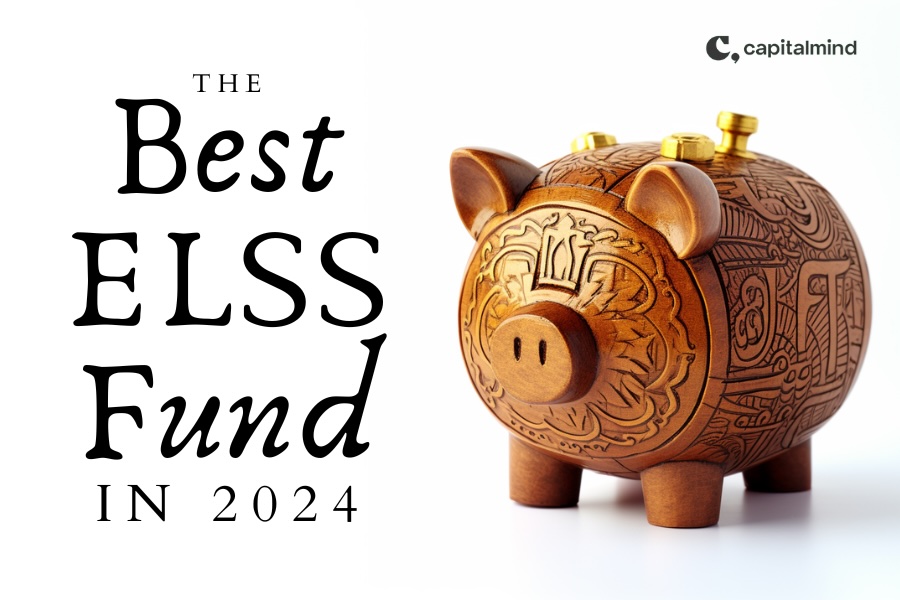DSP Mutual Fund has launched an NFO (New Fund Offering) for an active equity fund called the DSP Value Fund. The NFO is open from 20th Nov to 4th Dec 2020. We took a look to see if it makes sense for investors.
Short Answer: As a category, Value / Contra funds have struggled to beat the NIFTY over the last five years. The best-performing contrarian fund holds the same stocks most other active funds do. The DSP Value Fund has a couple of interesting differentiators like international exposure, rule-based approach to going to cash, and a quantitative approach to identifying underpriced stocks. However, it will need to demonstrate meaningful differentiation in how it picks domestic and international stocks before it can be considered a worthy addition to your portfolio.
Read on for our take on the DSP Value Fund NFO.
We are coming to the end of a dramatic year. One where the NIFTY witnessed the 3rd sharpest drawdown in 25 years.
In 2020, NIFTY saw its 3rd worst calendar year drawdown in 25 years and yet is YTD positive.https://t.co/7rcuRhqZtI pic.twitter.com/hiDevG7Ws3
— Calm Investor (@CalmInvestor) November 22, 2020
And yet, we might end the higher than we started.
To investors who have been hearing the “stock market disconnected from reality” narrative, phrases like “discount to intrinsic value”, “attractive valuations”, “bargain”, “potential for smart growth” must sound particularly soothing.
After all, isn’t Value Investing meant to make its long overdue comeback?
DSP Value Fund in a nutshell
“The primary objective of the scheme is to seek to generate consistent returns by investing in equity and equity-related or fixed income securities which are currently undervalued.”
From the DSP Value Fund Scheme Information Document
It will invest at-least 65% and up to 100% in equity-related instruments including Indian and International stocks. The remaining will be in fixed income securities or cash.
Further on in, the document elaborates its investment strategy for equity instruments.
Should you invest in the DSP Value Fund?
What we like:
International Exposure
The fund can invest up to 35% in international stocks. International exposure is essential to an Indian investors portfolio. We’ve been saying this long before the pandemic tech rally made it fashionable.
By ensuring at least 65% allocation to domestic equities, DSP ensures the fund is taxed as an equity fund and not a debt fund like many other internationally focused funds.
They could have made it even easier by simply allocating to a low-cost international ETF instead of active stock selection. In fact the simulated results in the product presentation assume international allocation to MSCI ACWI – A global equity index. interestingly, they did not pick a value ETF to represent international exposure.
How good (or lucky) an actively picked portfolio of international stocks is will only be evident after a few quarters of performance to look at.
Cash Calls
The argument is often framed as “The investor decides asset allocation, so the fund manager is meant to stick to the target asset and not make timing decisions.”
We have a different take. Most investors are not really thinking about asset allocation, because it sounds a lot like instructions on how to put on your seat belt on a plane. Something you only have to pretend to listen to.
Irrespective of how good a portfolio might be in the “long run”, investors are unlikely to stay invested in a strategy that suffers sharp drawdowns. In certain market conditions moving to cash becomes the best decision you can make, and the fund manager should have the flexibility and responsibility.
Chart below shows extent of cash allocation in the DSP Value fund in a simulated backtest.

Source: Fund Presentation
The fund will rebalance twice a year, in September and March. A rule-based approach to allocating more or less to cash is better than subjective decisions.
Funds that choose not to take cash calls can shrug their shoulders in a downturn and say that’s expected. Conversely, taking cash calls means there are fewer places to hide for an active manager, which we think is a good thing.
Pitching to long-term investors
Go back any length of time, in any market, and the common finding is that investor returns lag the returns of the funds they invest in.
It’s easy to see why. Funds see inflows immediately after a short period of outperformance, when they are most likely to underperform, and see outflows immediately after another short period of underperformance. The opposite to “Buy low and Sell high”.
A big part of the pitch for this fund is on getting the right investor. One who thinks long-term and is not bothered by shorter term fluctuations. Logically, this message should accompany any equity instrument.
What we don’t:
Value & Contra Fund Performance
As per Sebi’s 2017 mutual fund re-categorisation, Value and Contra funds are a separate category of actively managed equity funds. An AMC can offer one of the two, not both.
Unlike Large and Multicap funds, where there are a few dozen options to choose from, there are 17 funds Value or Contra funds. Only one, Quantum Long Term Equity Value Fund, has a 10 year history.

The good news for the category is there is enough dispersion in performance to suggest good and / or lucky fund managers add value.
The bad news is most have struggled to beat a passive benchmark.
Table below shows the 17 value / contra funds ordered by 5 year return with their launch dates, expense ratios, net assets, and annualised returns.
Value / Contra Fund Performance

In this list, Invesco India Contra Fund, and the UTI Value Opportunities Fund seem to have been most consistent in beating or at least matching the NIFTY.
Is the DSP Value Fund meaningfully different
That brings us to the trickier question of whether a “value fund” is really any different from other fundamentally picked equity funds?
Refer to the DSP “Quality at a Sensible Price” framework below.
The fund presentation has this framework for how it will pick “Quality” companies at “Sensible” prices.
All sound principles.
Step back and think: Which of those principles should NOT apply to every active equity mutual fund be it growth-focused, quality-focused, large or small cap?
I’m yet to see the fund presentation that says they seek out heavily indebted companies with negative free cash flows and shifty management, trading at ridiculously high multiples.
Isn’t all investing Value Investing? But that’s a bigger debate about the utility of labels like “growth” and “value” in investing.
The best-performing Value / Contra fund over the last 5 years (Invesco India Contra Fund) currently holds Reliance Industries, HDFC Bank, Infosys, ICICI Bank and Bharti Airtel as its top five holdings. How many growth funds hold those same stocks?
Who is being true to label, and who is not?
Intrinsic Value – That Mythical Beast
A value investor relies on knowing when the market is overly optimistic or pessimistic about the future of a company.
Here’s a simplistic way to think about this:
Assume a company generates ₹ 10 Crores (100 Million) a year in earnings today.
Scenario 1: If those earnings are expected to stay consistent forever, and not grow, its present or fair value to you, assuming a 5% opportunity cost of capital, is ₹ 200 Crores using a simple perpetuity calculation. That’s 20x Earnings.
Scenario 2: No company lasts forever, so if you only consider earnings for the next 10 years, the fair value drops to ₹ 77 Cr (8x Earnings)
Scenario 3: If you add a modest 5% growth each year to the mix, the fair value goes back up to ₹ 100 Cr (10x Earnings), 30% higher than the no-growth assumption
Scenario 4: Conversely, a company in decline losing 10% each year is worth far less, but still worth 5x earnings (40% lower than the no-growth scenario)
I’ve used earnings as a placeholder for Free Cash Flow, Dividends, or any other measure you could consider as earnings available to equity shareholders.
The Value Investor waits for the market to apply ridiculously high or low growth estimates to the future of a company, and buys when the quoted price is significantly lower than her fair value estimate.
Assuming that fair value estimate is accurate.
Courtesy the eloquent simplicity of Buffett and Munger, this exercise of arriving at a fair estimate has been made to look far easier than it is. It’s like having watched Federer do his thing for years, we started believing playing on centre court at Wimbledon is as easy as eating a bowl of strawberries and cream.
For all but the most simple slow-growth businesses, it is incredibly difficult to arrive at a realistic fair value that is not a massive range.
Aswath Damodaran recently wrote a three-part post on value investing. for those who don’t know him, he is a Finance Professor at NYU who literally wrote the text book on valuations. Image below shows the factors that feed into the intrinsic value of a company.

Source: Aswath Damodaran’s blog: Value Investing III: Requiem, Rebirth or Reinvention?
Simply put, you have to get most of those inputs right to approximate the intrinsic value of a company. And because year-on-year values compound, errors have a multiplicative effect on the final value. In short, it’s difficult.
DSP Value Fund applies a quantitative approach to eliminate “over-priced” stocks.

Source: Fund Presentation
Buy what’s below the reasonable valuation line. Makes sense.
But what’s “over-priced” itself changes based on the sector in question. We’ve seen this in our analysis of 700 stocks over five years. i.e. All else being equal, a ₹ of earnings from a stock in one sector is not valued the same as a ₹ from another.
To account for this, the DSP framework considers historical averages at the sector level (Chart 2 in the image above). But only the simplest businesses lend themselves to easy classification into broad buckets.
Here’s the challenge with applying purely quantitative metrics for valuation:
- Think about the range of business models that get clubbed under Pharmaceuticals. Biocon and Aarti Drugs probably have very few things in common as businesses, so comparing any fundamental metric would be misleading
- Companies operate across sectors and move into news ones to take advantage of tailwinds: Specialty chemical firms pivot to pharma [livemint]
- Canny promoters change names to imply they operate in whatever is the current hot sector
A quant valuation model needs to slice data finer and finer to ensure its comparing apples to apples. It then loses some of its biggest advantage, large numbers.
Should I invest in this NFO?
Not yet.
Value / Contra funds as a category have underperformed the market. The best-performing contrarian fund in this category holds HDFC Bank, ICICI Bank in its top holdings. Calling that a contrarian strategy is like a Delhi NCR tourism ad in November that says “Come for the fresh air”.
First, let’s call Value and Contra Funds what most really are. A different label on another active equity mutual fund.
The DSP Value Fund has a couple of positive differentiators like some international allocation, and a rule-based approach to go to cash.
A quantitative model to pick under-valued stocks sounds good in theory but the complexity of what constitutes fair value means there will probably be a lot of subjective decision-making to decide what goes in the portfolio. If that happens, it might end up buying the same stocks most other funds own, irrespective of label.
I hope they don’t do that and that they hold a significantly different portfolio from other equity funds across categories. But that’s easier said than done given the career risk of matching the index while holding unconventional stocks is higher than when underperforming the index while holding consensus stocks.
Investors should wait to see the kind of domestic and international companies that this new value fund picks and corresponding returns over a few quarters before adding it to their portfolio.
Update: The DSP team added their comments to our review to add a couple of points. You can find them in the tweet below
Thanks for the review, @deepakshenoy and @calminvestor. Here’s some more information in response to the wonderful post 🙏 pic.twitter.com/0XtCPcY9Mg
— DSP Mutual Fund (@dspmf) November 27, 2020
Disclaimer: Since we are active asset managers running a PMS, with quantitative and bottom-up fundamental portfolios, our views on equity and other mutual funds will reflect our bias.







